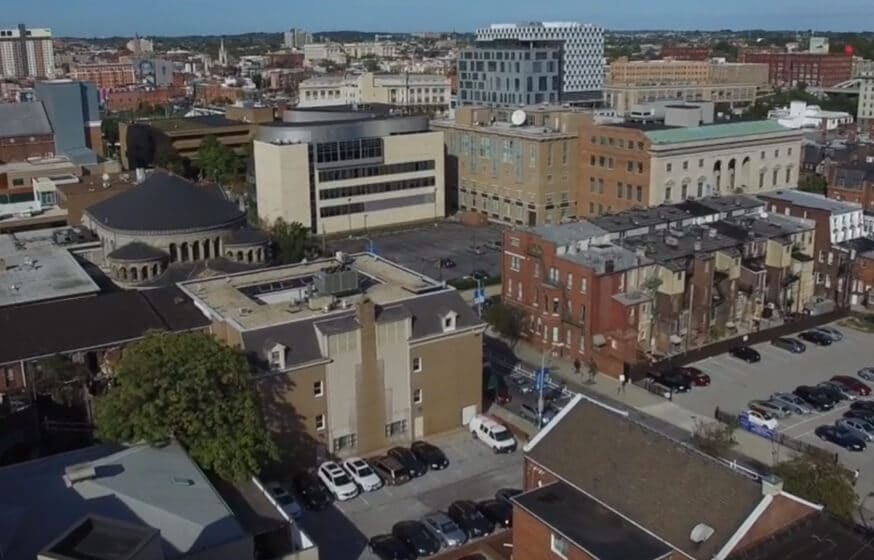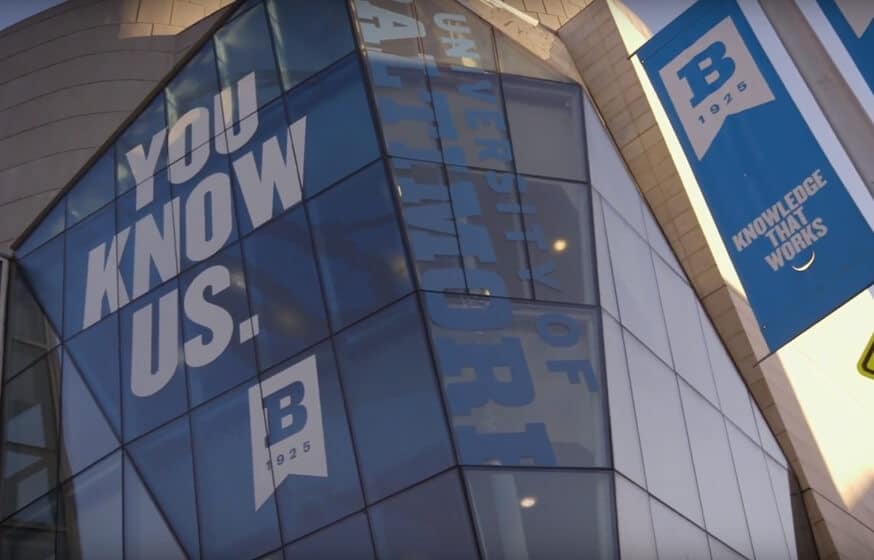Get Matched With Online Colleges
When you enroll at the University of Baltimore, you should first be aware that this school doesn’t offer campus housing. The university is a public institution located in a large city. In fact, it’s close to both Pennsylvania and the District of Columbia, so you’ll be able to get away for a day or weekend every so often to visit those places if you move closer to the school.
Search All Programs
Overview of University of Baltimore
UB offers classes online and in a hybrid format. This schedule alternates online class sessions with in-person classes. However, not every degree with be available online; check with the dean of your college for which classes are offered in-person, online, or in both formats.
The student population is 4,476, making it a smaller student body. Luckily, this supports a low student-to-faculty ratio of 12 to 1.
Degrees and certificates awarded to students include bachelor’s, master’s, and doctorate degrees; the certificate programs offered are those lasting two years, post baccalaureate certificates, and post-master’s certificates. If you enrolled in a dual credit program or passed Advanced Placement exams, you can also request credits for these achievements.
General Information
| School Type | Public |
|---|---|
| Campus Setting | City: Large |
| Campus Housing | No |
| Student Faculty Ratio | 12:1 |
| Graduation Rate | 41% |
| Year Founded | 1925 |

Student Enrollment
Total Students4,476
2,097
2,379
Undergraduate Student
Male 881
Female 1,216
Graduate Student
Male 999
Female 1,380
Explore Map
Top Rankings For University of Baltimore
Admissions
APPLICATIONS255
ACCEPTANCE199
Acceptance Rate78%
Enrollment 46
| Admissions | |
|---|---|
| Application Fee | $35 |
| High School GPA | Required |
| High School Rank | NA |
| High School Transcripts | Required |
| College Prep Courses | Recommended |
| Recommendations | NA |
| SAT/ACT | Required |
| TOEFL (Test of English as a Foreign Language) | Required |
| Application Deadline | Rolling |
| Common Application Accepted | No |
Tuition Cost & Financial Aid
Every charge and fee that you or your parents pay is included in the estimation of the total cost of a full year of school. This includes tuition (in- or out-of-state), books, supplies, other various fees and charges, and also what you may pay for your rent and meals. At the University of Baltimore, this is estimated at $34,196 for a recent academic.
Nevertheless, you aren’t likely to have to pay all of this. Your financial aid may help with some of the cost. University of Baltimore had an ‘average net price’ of $23,335 during a recent school year. This average net price refers to how much is left for the students to pay after financial aid has been applied. Because of the way you are found to be eligible for financial aid (family income), you may pay a different amount based on your family’s annual income. In that same recent year, families who earned between $30,000 and $48,000 paid around $19,192, while families who earned between $75,000 and 110,000 paid around $26,583.
Many freshman students received financial aid in recent years, sometimes as many as 97%. A slightly lower percentage (89%) received an average of $6,421 in grants or scholarships and 82% percent receive an average of $2,695 in institutional grants and scholarships.
| Average net price | 2018-2019 |
|---|---|
| Net Price | $23,335 |
| Average Total Aid | $6,421 |
| Students Receiving Financial Aid | 97% |
| Room & Board | $19,350 |
Sticker Price
- Tuition In-State - $9,096
- Tuition Out-of-State - $21,456
- Books and Supplies - $1,600
- Room & Board - $19,350
- Other - $4,150
Academics
You may have already decided what you plan to major in. Other students may still be weighing their options. The most popular degree programs offered at the University of Baltimore are business, management, marketing and related support services; homeland security, law enforcement, firefighting and related protective services; health professions and related programs; communication technologies/technicians and support services; and communication, journalism and related programs.
If you find a conflict in your schedule that makes it impossible for you to get to one or more of your classes, you do have options. At UB, you may have the option to drop the class sections that conflict with other activities so that you can add an evening class or an online section. This is important, especially if those classes are required for graduation.
Sometime during the semester, you’re going to make the decision to return to UB for your sophomore year. When you sign up for your classes and return for your second year, you will be added to the school’s retention rate. This rate measures the percentage by which first-time students return to campus. The 4-year graduation rate is 16% and the 6-year graduation rate is 41%.
Retention
Rate
4 year
Graduation
Rate
6 year
Graduation
Rate
Student Population Total
Student Population 4,476
2,097
2,379
Most Popular Programs & Majors
(# of Diplomas Awarded by Subject)
| All Business Majors | 232 Total Graduates / 38% |
|---|---|
| Business/Commerce, General | 223 Graduates |
| Real Estate | 9 Graduates |
| Homeland Security, Law Enforcement, Firefighting and Related Protective Services | 86 Total Graduates / 14% |
| Criminal Justice/Police Science | 63 Graduates |
| Forensic Science and Technology | 23 Graduates |
| Health Professions and Related Programs | 48 Total Graduates / 8% |
| Health Services Administration | 48 Graduates |
| Communication Technologies/Technicians and Support Services | 44 Total Graduates / 7% |
| Animation, Interactive Technology, Video Graphics and Special Effects | 44 Graduates |
| Communication, Journalism, and Related Programs | 28 Total Graduates / 5% |
| Digital Communication and Media/Multimedia | 28 Graduates |
| All Other Diplomas | 29% |
Outcome & Salary
The hope after college is that you will graduate and land a job, and preferably one in your field, right? Graduates from University of Baltimore have early career salaries of $53,700 on average. Their mid-career salaries jump to around $90,000.
Now, you should keep the 4-year cost of education in mind ($93,340 on average). This will affect your total income, especially if you paid for much of your school with loans.
Based on the numbers, a graduate’s 10-year salary earning potential is $693,300 and their 20-year earning potential is $1,593,300. If you subtract your 4-year cost of education from both of these numbers, you’ll have your projected return on investment (ROI). The expected 10-year projected ROI is $599,960 and the 20-year projected ROI is $1,499,960.
However, some high school graduates decide to get right into the work force, or perhaps don’t want to add the stress of college debt to their lives. They find jobs instead. While there are outliers that can make good money with a trade education or due to their own brilliance, these workers national average salary is $38,792. After 10 years, their projected total income is $387,920 and, 20 years later, it is $775,840.
| Graduates Salary | |
|---|---|
| College Grads Early Career Salary | $53,700 |
| College Grads Average Salary | $69,330 |
| College Grads Mid Career Salary | $90,000 |
| Return on Investment (ROI) | |
|---|---|
| 10 Year Salary Earnings Potential | $693,300 |
| 20 Year Salary Earnings Potential | $1,593,300 |
| Cost of Education (Net Price) 4 Year | $93,340 |
| 10 Year Projected ROI | $599,960 |
| 20 Year Projected ROI | $1,499,960 |
| No College Education Salary Comparison | |
|---|---|
| National Average Salary | $38,792 |
| 10 Year Projected Income | $387,920 |
| 20 Year Projected Income | $775,840 |

Related Top College Resources


















